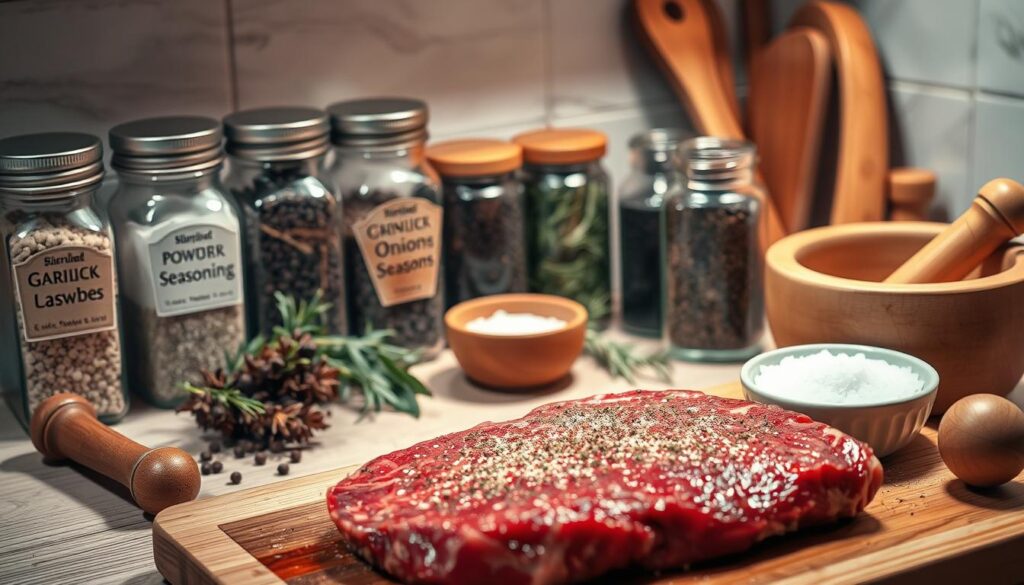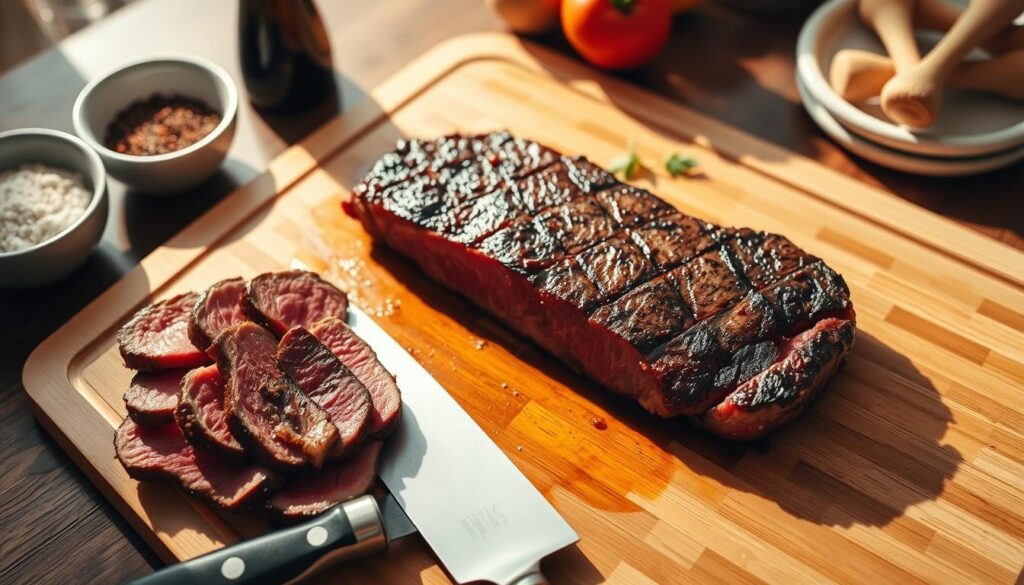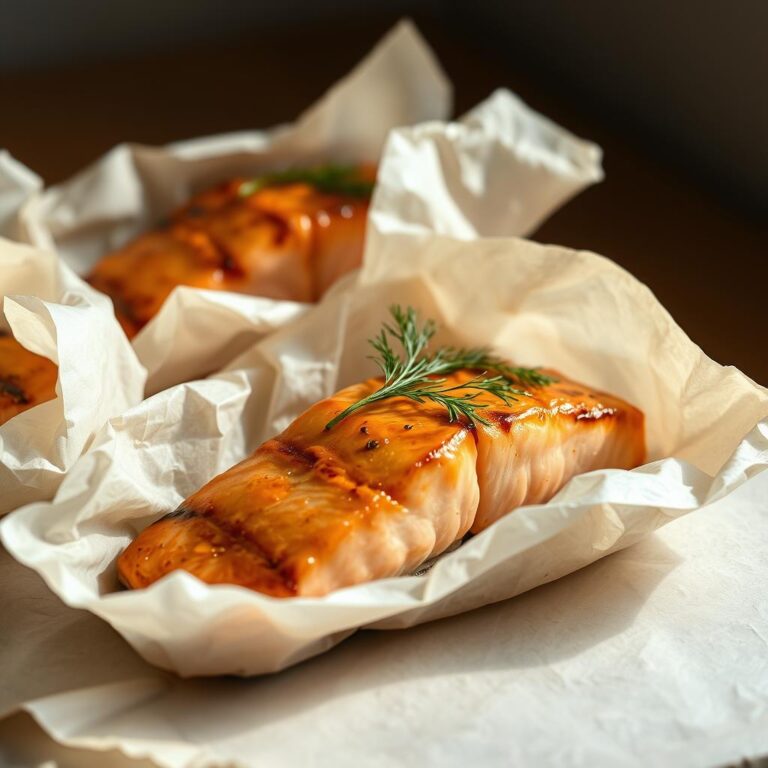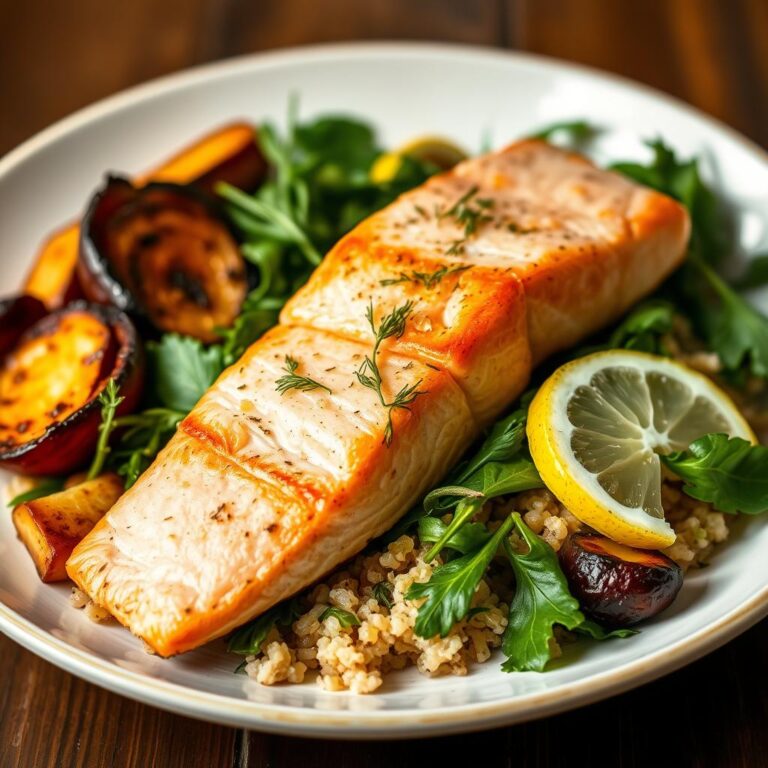Mastering the Art of Cooking Beef Steaks: Expert Tips for Juicy and Tender Meat
The sound of beef steaks hitting a hot pan brings back memories of family gatherings and weekend cookouts. Every home cook dreams of making that perfect, restaurant-quality steak. It’s a skill that turns an ordinary meal into a special culinary experience.
From professional chefs in Ottawa to home cooks across the United States, mastering cooking techniques is key. It’s the secret to creating juicy meat that impresses everyone at the table. This guide will help you unlock the secrets of preparing the most delicious beef steaks in your own kitchen.
Understanding the nuances of steak preparation can take your cooking to the next level. You’ll learn how to pick the best cuts, use professional techniques, and make tender steaks. These steaks will be as good as those in top-tier restaurants.
Key Takeaways
- Learn professional beef steaks cooking techniques
- Discover secrets to achieving juicy and tender meat
- Understand the importance of cut selection
- Master temperature and preparation methods
- Transform home cooking with expert steak skills
Understanding Different Cuts of Beef Steak
Choosing the right beef cut is key to a great steak experience. Knowing the differences helps pick the perfect steak for any meal. Whether it’s a special occasion or a simple weeknight dinner.
Beef cuts vary widely, each with its own taste and texture. The quality of a steak depends on muscle structure, marbling, and where it comes from on the animal.
Premium Beef Cuts
Premium cuts are known for their tenderness and rich flavor. They come from muscles that work less, making them incredibly tender.
- Ribeye: Famous for its marbling and soft texture
- Sirloin: A lean cut with a strong beef taste
- New York Strip: Offers a balance of tenderness and flavor
Economy Beef Cuts
Even budget-friendly cuts can be tasty with the right cooking. These need more care to be tender.
- Flank steak: Lean and great for marinades
- Chuck steak: An affordable choice with deep flavor
- Round steak: Lean and best for slow cooking
| Cut Type | Marbling | Tenderness | Price Range |
|---|---|---|---|
| Ribeye | High | Very Tender | $$$$ |
| Sirloin | Medium | Moderately Tender | $$ |
| Flank Steak | Low | Tough | $ |
Knowing about beef cuts helps you make better choices. Marbling is key to flavor and tenderness. More marbling means a juicier, tastier steak.
Essential Tools and Equipment for Steak Preparation
Preparing the perfect steak is more than just using quality meat. You need the right tools to succeed. A well-equipped kitchen can turn a simple meal into a masterpiece.
Getting the right equipment can improve your steak-making skills. A reliable meat thermometer is key for the perfect doneness. It lets you check the internal temperature, ensuring your steak is cooked just right.
- Meat tenderizer for breaking down tough muscle fibers
- Cast-iron skillet for even heat distribution
- Sharp chef’s knife for precise cutting
- Meat thermometer for accurate temperature control
- Tongs for safe meat handling
The cast-iron skillet is a top pick for steak. It retains heat well and cooks evenly, creating a perfect sear. Using it with a meat tenderizer can make even cheap cuts tender and tasty.
| Tool | Purpose | Recommended Type |
|---|---|---|
| Meat Thermometer | Check internal meat temperature | Digital instant-read |
| Meat Tenderizer | Break down muscle fibers | Stainless steel mallet |
| Cast-Iron Skillet | Searing and even cooking | Pre-seasoned 12-inch |
Professional chefs know that good equipment is an investment in your skills. By choosing the right tools, you can cook steaks like a pro in your own kitchen.
The Science Behind Meat Tenderization
Meat’s complex structure is key to a tender, tasty steak. Muscle fibers and connective tissue greatly affect meat texture. Cooking beef breaks down these components, turning tough cuts into a delicious meal.
Meat is made of proteins and fibers at a molecular level. These can make steaks hard to chew. Tenderization aims to soften these fibers and tissues, making steak more enjoyable.
Physical Tenderization Techniques
Physical methods can make tough meat tender. These methods target the meat’s structure:
- Mechanical pounding to break down muscle fibers
- Scoring the surface to interrupt connective tissue
- Using a meat mallet to create microscopic tears
Chemical Tenderization Approaches
Enzymatic and acidic marinades are effective in softening meat. These chemical methods break down proteins:
- Enzyme-based marinades containing papain from papaya
- Acidic marinades using vinegar or citrus juices
- Enzymatic meat tenderizers that target specific proteins
Knowing these tenderization methods lets you turn even the toughest beef into a tender steak. It’s like having a restaurant-quality steak at home.
Proper Temperature and Timing Guidelines
Cooking the perfect steak needs precision and knowing about internal temperature. Professional chefs say it’s not just guessing. It’s a science of heat and timing.
Your meat thermometer is key for a perfectly cooked steak. The internal temperature shows the steak’s doneness. It’s vital for a tasty meal.
Steak Doneness Temperature Guide
| Doneness Level | Internal Temperature | Appearance |
|---|---|---|
| Rare | 125°F | Cool red center |
| Medium-Rare | 135°F | Warm red center |
| Medium | 145°F | Pink center |
| Medium-Well | 150°F | Slight pink center |
| Well-Done | 160°F | No pink |
Knowing about carryover cooking is important. When you take the steak off heat, its temperature goes up 5-10 degrees. So, pull it off a bit before your target temperature.
Resting Time Recommendations
- Thin steaks (under 1 inch): Rest 5-7 minutes
- Thick steaks (1-2 inches): Rest 10-15 minutes
- Large roasts: Rest up to 20 minutes
Resting time lets juices spread out, making the steak moist and tender. Cutting too soon lets juices run out, making it dry.
Flavorful Beef Steak Marinades to Try Today
Starting with steak marinades can really boost your steak’s flavor. These mixtures turn simple cuts into amazing meals. They add depth and tenderness to your beef.
Marinades are all about flavor infusion and tenderizing. They make your steak taste better and feel softer.
Classic Marinade Foundations
Traditional marinades have three main parts:
- Acid (vinegar, citrus juice)
- Oil (helps distribute flavors)
- Seasonings (herbs, spices)
These marinades make your steak tender. Acidic ingredients like red wine vinegar or lemon juice tenderize the meat and add complex flavors.
Modern Marinade Innovations
Today’s chefs are trying new things in marinades. They use exotic spices, craft beer, and fruit juices. The goal is to add bold flavors without overpowering the meat.
Remember, don’t marinate steaks for more than 24 hours. It can make the meat mushy. For the best results, marinate for 2-4 hours.
Quick Marinade Recipe
- 1/4 cup balsamic vinegar
- 2 tablespoons olive oil
- 3 minced garlic cloves
- Fresh rosemary sprigs
- Cracked black pepper
Mix the ingredients, coat your steak, and let it marinate. Your taste buds will love this.
Seasoning Techniques for Maximum Flavor

Improving your steak’s taste starts with expert seasoning methods. These techniques turn a regular steak into a gourmet dish. Chefs know seasoning is more than just salt and pepper.
Dry rubs are a great way to add depth to your steak’s flavor. They mix herbs, spices, and seasonings to create a tasty crust. This crust keeps the meat moist and brings out its natural taste. Making a good dry rub means knowing how to mix flavors well.
- Salt brining tenderizes meat and boosts its flavor
- Herb infusions add a subtle, refined taste
- Try different seasoning mixes
Salt brining is key for making great steaks. It involves soaking the meat in saltwater to keep it moist and tender. The salt gets into the meat, breaking down proteins and making it taste better.
| Seasoning Technique | Flavor Impact | Preparation Time |
|---|---|---|
| Dry Rubs | Rich, Complex | 5-10 minutes |
| Salt Brining | Deep, Tender | 2-12 hours |
| Herb Infusions | Subtle, Aromatic | 30-60 minutes |
Herb infusions add another layer to your steak’s flavor. Herbs like rosemary, thyme, and oregano can be rubbed on the meat. This releases oils that make the steak taste amazing. Use these methods carefully and give them enough time to work.
Perfect Searing Methods and Tips
Learning to sear beef steaks like a pro is key. It’s all about the science of crust formation and the Maillard reaction. High-heat cooking turns simple meat into a flavorful feast.
To get a perfect sear, start with the right cooking surface and steak prep. Chefs say a few steps are essential for that golden crust. This crust locks in flavor and makes the steak irresistible.
Pan Searing Basics
Pan searing needs precision and the right tools. Here are key tips for a perfect crust:
- Choose a heavy-bottomed cast-iron skillet for even heat
- Pat the steak dry to remove excess moisture
- Bring the steak to room temperature before cooking
- Use high smoke-point oils like avocado or grapeseed oil
Grill Searing Techniques
Grilling brings a special touch to searing. Follow these pro tips to improve your steak:
- Preheat the grill to high temperature (around 450-500°F)
- Clean and oil the grill grates to prevent sticking
- Create two-zone heating for better temperature control
- Use tongs to flip the steak, avoiding piercing the meat
By mastering these searing methods, your home-cooked steak will be as good as a top steakhouse.
Resting and Serving Your Steak

Getting the perfect steak is more than just cooking. It’s about letting the juices spread evenly. This step turns a good steak into a memorable meal. Chefs know that letting the steak rest is key for flavor and tenderness.
Resting the steak helps the juices spread out. When you take it off the heat, it keeps getting warmer. Letting it rest for 5-10 minutes makes sure the juices are spread out. This makes your meal more juicy and tasty.
Cutting Techniques for Optimal Enjoyment
Learning how to cut your steak right can make it look and taste better. Here’s how:
- Use a sharp knife with a clean, smooth edge
- Cut against the meat’s grain to maximize tenderness
- Slice at a 45-degree angle for optimal texture
- Aim for consistent slice thickness (about 1/4 to 1/2 inch)
Presentation Tips
Making your steak look good can make it taste better too. Try these ideas:
- Choose a warm plate to keep the steak at ideal temperature
- Arrange slices in a fan or overlapping pattern
- Garnish with fresh herbs like rosemary or thyme
- Add a small dollop of compound butter for extra flavor
Pro tip: Let your steak rest on a warm plate, tented with aluminum foil, to maintain its temperature without continuing to cook the meat.
Common Steak Cooking Mistakes to Avoid
Cooking the perfect steak needs skill and focus. Many home cooks find it hard to make beef as good as restaurants. Knowing common mistakes can help you improve your steak-cooking skills.
Mistakes can turn a great piece of meat into a bad meal. Overcooking is a big mistake that ruins the steak’s texture and taste. Undercooking is another problem, risking food safety and making the meal unappetizing.
Critical Temperature Challenges
Temperature control is key in steak cooking. Here are some temperature mistakes to avoid:
- Skipping meat thermometer usage
- Not allowing meat to reach room temperature before cooking
- Placing cold steak directly on high heat
- Failing to monitor internal meat temperature
Handling and Seasoning Errors
Seasoning mistakes can affect your steak’s taste. Seasoning needs precision and knowledge. Salt and pepper should be used generously but evenly.
Avoid these handling mistakes:
- Overcrowding the cooking surface
- Moving the steak too frequently while cooking
- Cutting into the meat immediately after cooking
- Neglecting the critical resting period
With practice and attention to these details, you’ll get better at cooking steak. You’ll make sure every steak is delicious.
Complementary Sauces and Compound Butters

Take your steak to the next level with tasty sauces and herb butter. These add-ons turn a simple meal into a feast. The key is to pick the right flavors that match your beef.
Top chefs say making compound butters is a smart move. These spreads can make your steak taste amazing.
- Classic Herb Butter Options:
- Garlic-herb butter with fresh parsley and thyme
- Blue cheese compound butter
- Roasted shallot and chive butter
Making the best steak sauce is about finding the right mix of flavors. Creamy sauces are great with lean steaks. Bold, tangy ones are perfect for fattier cuts.
- Recommended Steak Sauces:
- Peppercorn sauce
- Red wine reduction
- Béarnaise sauce
When making herb butter or steak sauce, use fresh stuff. Let the flavors mix well before you serve. Your taste buds will love the extra care you put into it.
Side Dish Pairings That Enhance Your Steak
Choosing the right sides can make a meal unforgettable. The right vegetable sides and starch pairings bring out the best in your steak.
Creating the perfect plate is all about balance. You want your sides to add to the flavor of your steak, not take it over.
Classic Steak Companions
- Roasted garlic potatoes
- Grilled asparagus
- Creamed spinach
- Caramelized onions
Modern Vegetable Side Innovations
Today’s chefs are mixing things up with new side dishes. Try roasted root vegetables or quinoa salads for a twist on the usual.
| Steak Cut | Recommended Side | Flavor Profile |
|---|---|---|
| Ribeye | Truffle mashed potatoes | Rich and decadent |
| Filet Mignon | Roasted Brussels sprouts | Delicate and balanced |
| New York Strip | Grilled vegetable medley | Bold and robust |
Think about your steak’s cut and how it’s cooked when picking sides. The right side can make your meal even better.
Pro Tips for Perfect Pairings
- Match protein intensity with side dish complexity
- Balance rich meats with light, fresh vegetable sides
- Experiment with seasonal ingredients
- Consider color and visual appeal
Remember, the best steak accompaniments are those that spark joy and complement your main course’s unique characteristics.
Conclusion
Your journey to mastering steak is more than just cooking. It’s an art that turns simple meals into unforgettable dining experiences. By learning about quality cuts, perfect cooking, and flavors, you’ve opened up a world of tasty possibilities in your kitchen.
Building confidence in cooking steaks takes practice, patience, and a desire to learn. Whether you love a tender ribeye or a lean sirloin, the skills you’ve learned will help you make amazing steaks at home. Remember, cooking skills grow with each new experience.
Every steak you make is a chance to get better and find your own style. You now know how to choose the right cuts, sear them perfectly, and pick the best marinades. Use this knowledge to make your home cooking even better. Trust yourself and enjoy the tasty results of your hard work.
Your culinary journey is just starting. Keep trying new things, learning, and enjoying every delicious moment in your kitchen. With dedication and passion, you’ll keep improving your steak cooking skills and making meals that impress and delight.







